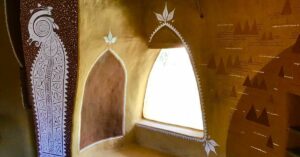Made of Local Palmyra Wood, This Mumbai House Was Built by Hand & Needs No ACs!
Built using traditional techniques, this unique house permits light and air to enter but keeps out rain and direct sunshine. Find out how! #SustainableHomes
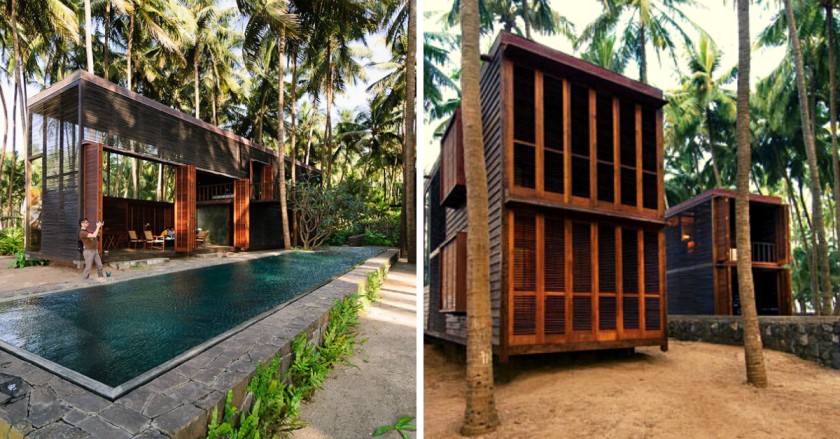
Imagine resting peacefully in a house by the beach under the shade of several coconut trees. Sounds like a dream right? The ‘Palmyra house’, located to the south of Mumbai on the banks of the Arabian Sea makes this dream come true with sustainable architecture!
Located on the Nandgoan village, mostly populated with fisherfolk and their families, the unique ‘Palmyra house’ is built by renowned architect, Bijoy Jain and his team at Studio Mumbai.
This 3000 sq. ft house is made up of two huge wooden structures that have been constructed with slanted wooden slates that though permit light and air to enter, keeps out the rain and direct sunshine.
‘The Better Home’ brought to you by ‘The Better India’
We created ‘The Better Home’ because you shouldn’t have to choose between non-toxic ingredients and effective cleaning. Our cleaners are safe for babies, pets, skin and our oceans.
Explore our range of powerful, earth-friendly cleaners here.
All of this is made from palmyra, a particular type of palm tree which is cut, dried, and locally-harvested as wood.
A ‘Palmyra’ Tree House
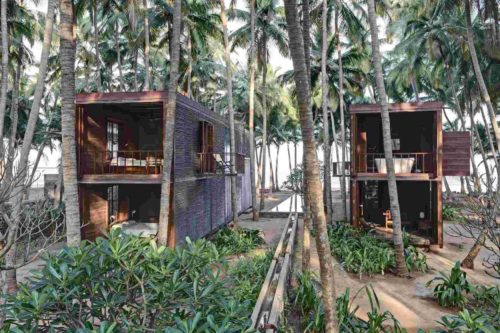
“The house is set in a coconut plantation with a beautiful view of the Arabian Sea. The entire idea was to create something light with plenty of air circulation. That’s how Bijoy Jain came up with the idea of using Palmyra which was abundantly available nearby,” Jeevaram Suthar, who worked with the team for this project in 2007 tells The Better India (TBI).
“All the different parts of the palmyra have been used over the ages in different ways. From thatching roofs to creating mats, baskets, basically almost everything we use coconut trees for,” he adds.
The Palmyra house serves as a vacation home for Mumbai-based entrepreneur Jamshyd Sethna and his family.
“The two box-like structures which make up the entire home is separated by a 25-foot wide courtyard that consists of a pool that simply merges with the surroundings. This separation is one of the major highlights of the house. And the water for the house is harvested from three on-site wells, stored at the top of a water tower,” Jeevaram explains.
Being One With Nature
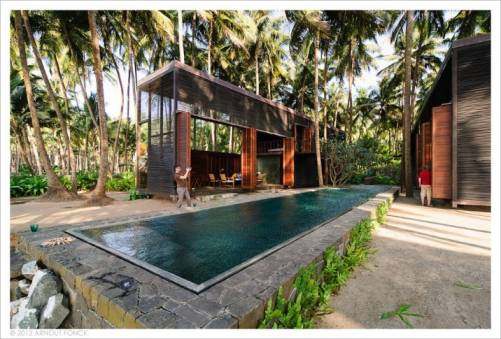
Jeevaram goes onto explain how the structural framing for the house is built of ‘Ain wood’ which is also known as ‘Marutham’ in Tamil.
“This particular wood was used because it is a local variety and also fire-resistant, making it an ideal choice. The team used traditional interlocking techniques while building the frame of the house,” he adds.
The slanted wooden slate-like structure, also known as louvres, is also another key feature of ‘The Palmyra House’. Jeevaram explains how these blinds-like openings have been constructed with the outer bark of the Palmyra tree which increases the air circulation in the house.
Chennai-based architect, Benny Kuriakose, who has constructed over 100 earthen houses and has worked with Palmyra trees, shares a similar sentiment.
“Where thatched coconut leaves last for one year, palmyra leaves last for four, which classifies it as a much stronger alternative,” he explains.
Jeevaram shares how several other aspects of the house have been planned in such a way that there is a traditional and sustainable sense to the place as a whole.
“We used local basalt rock to make the boundary walls, pillars and the pavements and the plaster finish used was pigmented with sand from the beach,” he explains.
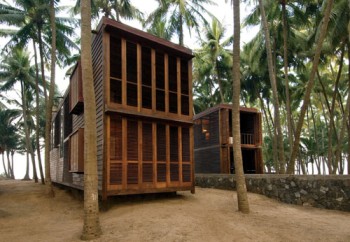
The house cost close to Rs 2 crores. It has a minimised footprint and was positioned to preserve as many trees as possible. Due to the density of trees, the building site is inaccessible by motorised vehicles or heavy equipment, which required the excavation of the foundations entirely by hand.
This excavated material was then utilised for agricultural purposes elsewhere on the site. The coconut plantation uses the local aqueduct irrigation system and water is harvested from four on-site wells, which also provide water for the house.
“It was a real collaboration between the architects and the craftsmen with regard to every design and detail that went into the home. We tested various traditional techniques to ensure that it was well adapted with the environment and went ahead with the ones that worked. This is what has culminated into the handcrafted Palmyra house,” says he.
Using locally-available material, the expertise of local artisans and craftsmen and the use of traditional building techniques, ‘Palmyra’ is a stellar example of how we can save up on resources and at the same time, reduce our carbon footprint.
(Edited by Saiqua Sultan)
Like this story? Or have something to share? Write to us: [email protected], or connect with us on Facebook and Twitter.
If you found our stories insightful, informative, or even just enjoyable, we invite you to consider making a voluntary payment to support the work we do at The Better India. Your contribution helps us continue producing quality content that educates, inspires, and drives positive change.
Choose one of the payment options below for your contribution-
By paying for the stories you value, you directly contribute to sustaining our efforts focused on making a difference in the world. Together, let's ensure that impactful stories continue to be told and shared, enriching lives and communities alike.
Thank you for your support. Here are some frequently asked questions you might find helpful to know why you are contributing?


This story made me
-
97
-
121
-
89
-
167




